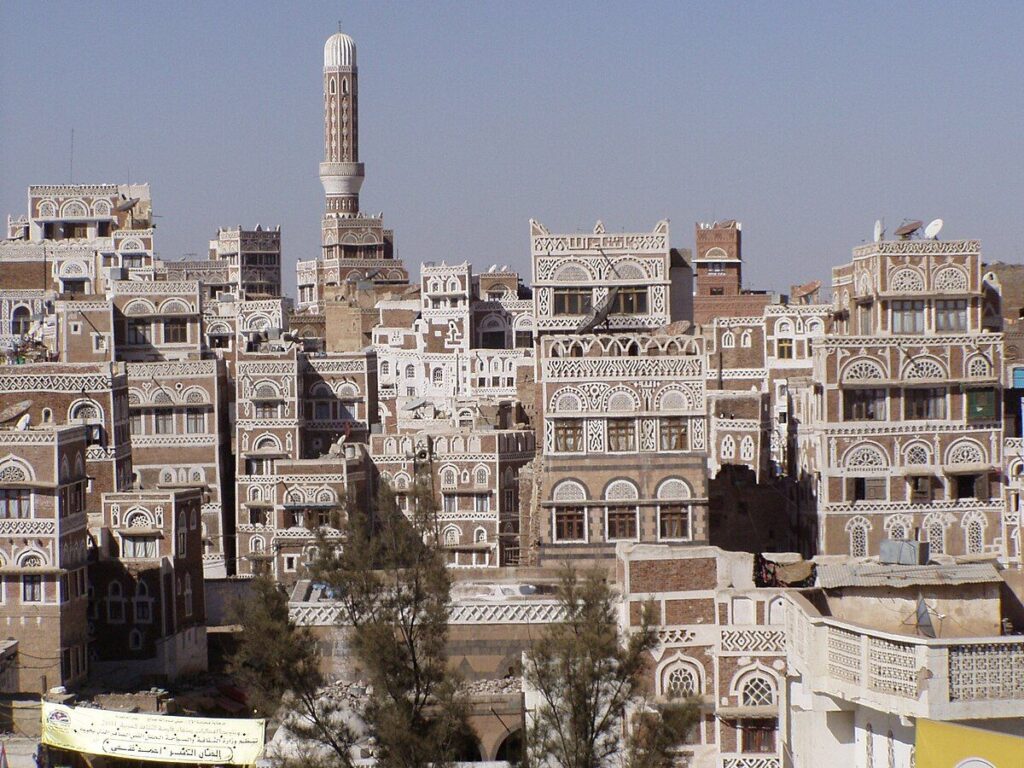Sana’a, Yemen – Travel Tips
Category
Categories
Popular Articles

**Overview of the Destination:**
Sana’a, the ancient capital of Yemen, is famous for being one of the oldest continuously inhabited cities in the world. The city’s old town, a UNESCO World Heritage Site, is celebrated for its unique, multi-storied buildings made of rammed earth and decorated with geometric patterns, making it a treasure trove of Islamic architecture. As such, the city is a gem for history buffs and architecture enthusiasts.
**Best Time to Visit:**
The best time to visit Sana’a is in the spring months of April and May or fall months of September and October, when the temperatures are moderate, and rainfall is minimal. The summer months (June to August) can be quite hot, while winters (December to February) are relatively cool with potential for rainfall.
**Climate & What to Pack:**
Sana’a is located at a high elevation, resulting in a relatively dry and temperate climate with hot summers and cool winters. It’s advisable to pack lightweight clothing with a few warmer clothes for cooler nights, especially during the winter months. Don’t forget to include a reliable sunblock and sunglasses for the scorching summer sun.
**Getting There:**
The city is served by Sana’a International Airport. From the airport, taxis are readily available to take you to the city center. Note that Yemen requires a visa for most foreign visitors, so it’s important to get the necessary documentation sorted prior to your travel.
**Getting Around Locally:**
Travel in Sana’a is typically by taxi or private car hire as there isn’t a reliable public transportation system. Walking can be a fantastic way to explore the old city, but it can be challenging due to moderate traffic and narrow streets. Renting a car or scooter isn’t recommended given the chaotic local driving conditions.
**Safety Tips:**
Travelers should exercise caution due to the political situation in Yemen. It’s advisable to avoid certain areas with increased conflict risk and be aware of customs and laws to avoid inadvertently causing offense. Modest clothing is recommended. Solo travelers, particularly women, should take additional precautions.
**Top Things to Do & See:**
Among the must-visit attractions are the Great Mosque of Sana’a, the largest in Yemen, and the Yemen National Museum featuring a wealth of historical and cultural artifacts. Don’t miss a walk through the bustling markets of Bab-al Yemen where you can find traditional arts and crafts.
**Where to Stay:**
As for accommodations, options are quite limited in Sana’a compared to other tourist destinations. If budget isn’t an issue, the Burj Al Salam Hotel offers luxury accommodations. Mid-range options include the Dawood Hotel. Budget travelers can consider local guesthouses.
**Food & Local Cuisine:**
When in Sana’a, savor popular Yemeni dishes like Saltah (a meat stew), Bint Al Sahn (a sweet honey cake), and Mandi (meat and rice dish). Dining etiquette is essential, and remember to eat with your right hand. Among the places to eat, Sana’a Restaurant comes highly recommended.
**Cultural & Practical Tips:**
The currency in Yemen is the Yemeni rial, and Arabic is the official language. English is somewhat understood in urban areas. As Yemen is a majority-Muslim country, it’s polite to follow local customs, such as dressing modestly and respecting religious practices.
**Sustainable or Responsible Travel Tips:**
When visiting Sana’a, be mindful of the local culture and traditions. Respect the locals and their customs, and always seek permission before photographing people.
**My Personal Tip:**
For a first-time visitor, venturing into the markets of Bab-al Yemen can be an experience that’s as overwhelming as it is mesmerizing. Take your time, soak in the atmosphere and don’t be afraid to haggle!










